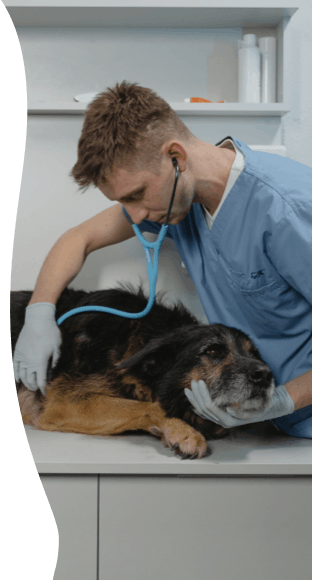What to Do if a Dog Splits a Nail
What is Torn Toenail?
As with human beings, the toenail of a dog has to be clipped or trimmed regularly. If there is even a small movement of the paw while clipping the nail, it can chip, tear or break. If the toenail bed becomes inflamed, the condition can worsen. Therefore, it is important to cut long nails to avoid snagging and further breakage. As your dog walks on carpeting, the nail may become long and brittle. The areas that are usually affected tend to be the dewclaws and the front paws. If you find that your dog's toenails are breaking apart, there is reason for concern. When cutting the nails, you should be extra careful not to cut them too short. If you notice bleeding after cutting the nails, you may need to take your pet to a veterinarian if it does not stop bleeding.
When a dog's nail splits, tears or breaks after becoming brittle or when clipped, this can cause tearing of the nail, which can result in extreme pain.
Vet bills can sneak up on you.
Plan ahead. Get the pawfect insurance plan for your pup.
Compare plans

Torn Toenail Average Cost
From 444 quotes ranging from $200 - $500
Average Cost $300
Symptoms of Torn Toenail in Dogs
It is obvious that you will notice when your canine's toenails are injured. Of course, the injury will be very painful. You may notice that your dog is limping, yelps or constantly lick its wound. However, other signs might include:
- Hanging nail
- Blood stains on carpeting or floors
- Exposed flesh
- Infection
- Trauma
- Visibly damaged toenails
- Swelling
- Excessive bleeding
The bleeding typically comes from smaller blood vessels that will clot quickly, and is not typically life threatening. However, the bleeding may need to be stopped by a veterinarian. This can be quite painful, and your dog may bite if you try to administer first aid instead of seeking professional help.
Top
Causes of Torn Toenail in Dogs
There are several causes of a torn toenail in dogs. Some of the common causes include:
- Damage to the toenails, especially if your dog is very active
- Nail snagging on carpeting, plants or other material during activity such as running
- Inflamed toenails
- Clipping of the toenails
- Weakened toenails due to an underlying health condition
- Cancer in the foot and nail area
Top
Diagnosis of Torn Toenail in Dogs
The diagnosis of a torn toenail in dogs is based on a visual examination of the affected area by a veterinarian. If there is extreme pain, the veterinarian will know by the dog's response to touching. If so, the veterinarian may administer pain medication or sedation to help take away the pain.
If there is evidence that your pet may have an underlying condition affecting his health that may could change the condition of his nails, blood tests and urinalysis could be done at the veterinarian's discretion.
Top
Treatment of Torn Toenail in Dogs
Treatment for a torn toenail in dogs takes several distinctive steps. First, the veterinarian will inspect the area, after which damaged portions may be removed. Upon carefully inspecting the toenail, sedation may be needed.
Of course, if there is bleeding, the veterinarian will try to stop the bleeding right away and disinfect the area. Any hanging portions of the nail will be removed if possible, and the area will be disinfected for extra precaution against infection.
Antibiotics may also be administered to also prevent infection. If the veterinary caregiver has to remove a large portion of the nail, bandaging might be necessary to prevent infection of the nail bed. The area will be bandaged nicely and pain relief may be prescribed, depending on how bad the wound is. The veterinarian will determine if follow up treatment is necessary, depending on the extent of the damaged toenail and how well the initial treatment went.
Top
Recovery of Torn Toenail in Dogs
After the initial treatment, the swelling and pain should go down within two days of the treatment. If the nails were removed, these will grow back within several weeks. However, the pet owner should monitor the foot as much as possible during the re-growth period. If your dog's nails do not grow back or grow irregularly, you may have to continue frequent trimming and monitoring. If your dog displays continuous signs after being treated, then you should schedule a veterinarian visit for reassessment. Most dogs will completely recover, but it will take time because the nail will have to completely grow back to cover the exposed spot.
Top
*Wag! may collect a share of sales or other compensation from the links on this page. Items are sold by the retailer, not Wag!.
What to Do if a Dog Splits a Nail
Source: https://wagwalking.com/condition/torn-toenail
0 Response to "What to Do if a Dog Splits a Nail"
Post a Comment